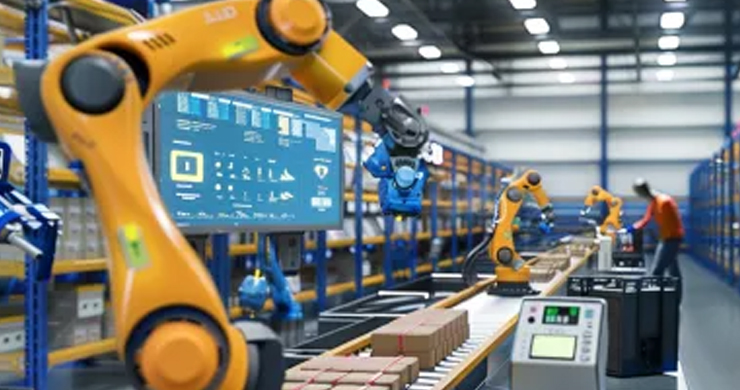Automation in warehouse management has revolutionized the way companies operate and manage their inventories. This article explores the many benefits of automation, from improving operational efficiency to reducing costs and errors.
Improved operating efficiency
Cycle Time Reduction
Automation allows repetitive and tedious tasks to be performed faster and more accurately. Automated systems can move products within the warehouse faster than manual methods, significantly reducing cycle times.
Increased productivity
Robots and automated conveyor systems can work 24 hours a day, 7 days a week, without the need for breaks. This maximizes productivity and makes it possible to handle a higher volume of operations.
Cost reduction
Reduced labor dependence
Although automation requires an initial investment, in the long run it reduces operating costs by reducing reliance on human labor. Fewer workers are needed to perform repetitive and physically demanding tasks.
Space optimization
Automated systems can use space more efficiently. Automated warehouses can store products in smaller spaces and at greater heights, optimizing the use of available space.
Error reduction
Inventory accuracy
Automated systems reduce human errors associated with inventory handling and accounting. Bar code scanners and RFID systems ensure that inventory data is accurate and updated in real time.
Improved traceability
Automation facilitates product traceability within the warehouse. Each product movement is automatically recorded, providing a detailed record that helps track the location and status of each item.
Improved safety
Reduction of occupational risks
Automation reduces the need for workers to perform dangerous or physically demanding tasks. Robots and automated systems can handle heavy materials and perform repetitive movements, reducing the risk of occupational injuries.
Safer working environment
Sensors and monitoring systems in automated warehouses help prevent accidents by detecting and responding to hazardous situations more quickly and effectively.
Improved customer service
Fast order picking
Automation allows orders to be picked and shipped faster and more accurately. Automated picking systems ensure that the right products are picked and shipped in the shortest possible time, improving customer satisfaction.
Increased product availability
With more accurate and efficient inventory management, products are more likely to be available when customers order them. This reduces stock-outs and improves the customer experience.
Conclusion
Automation in warehouses offers a wide range of benefits, from improving operational efficiency to reducing costs and errors. By adopting automated technologies, companies can optimize their operations, improve workplace safety, and provide better customer service. Investing in automation is not only a competitive advantage, but also a necessity in a constantly evolving and highly competitive marketplace.





